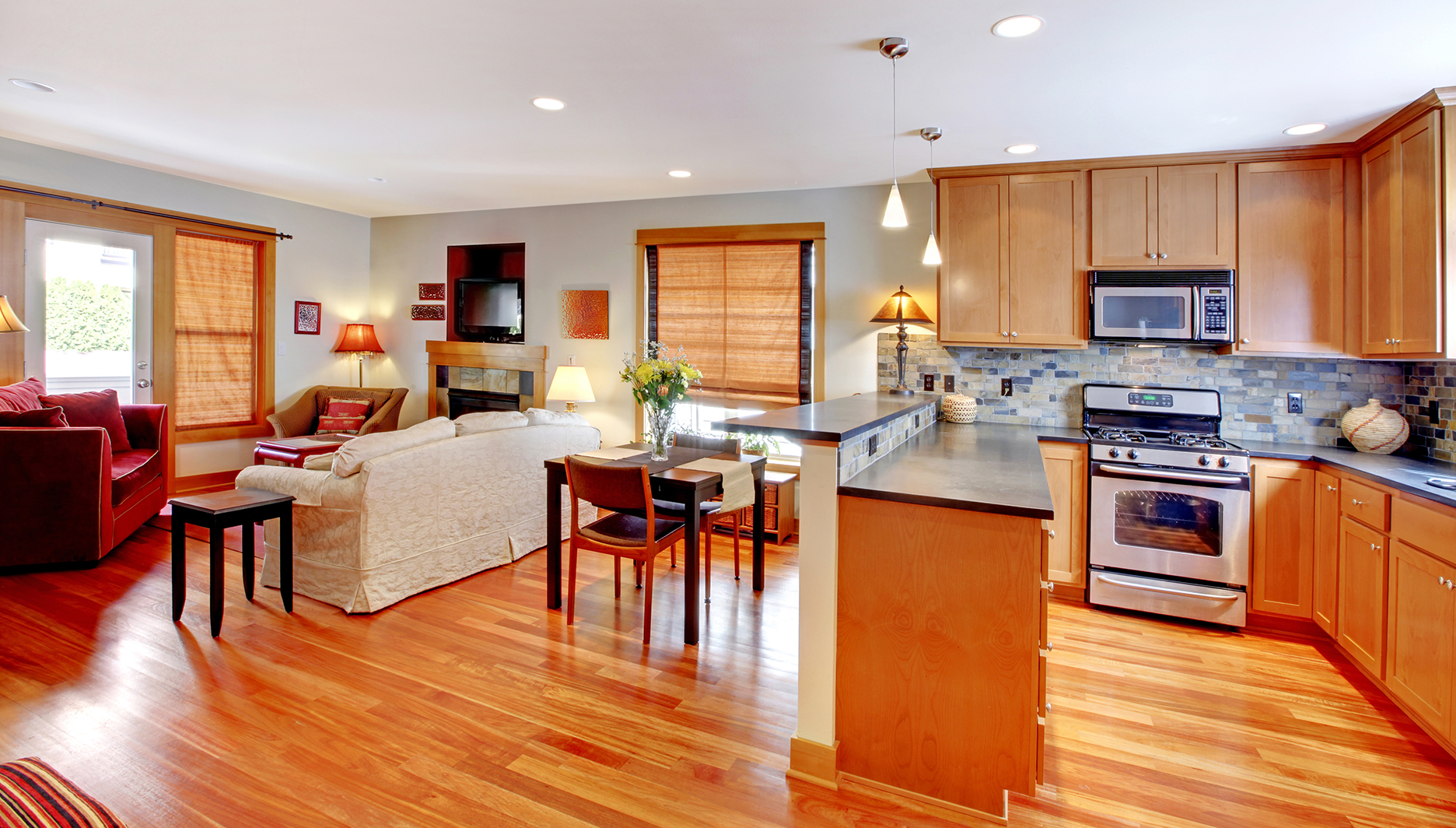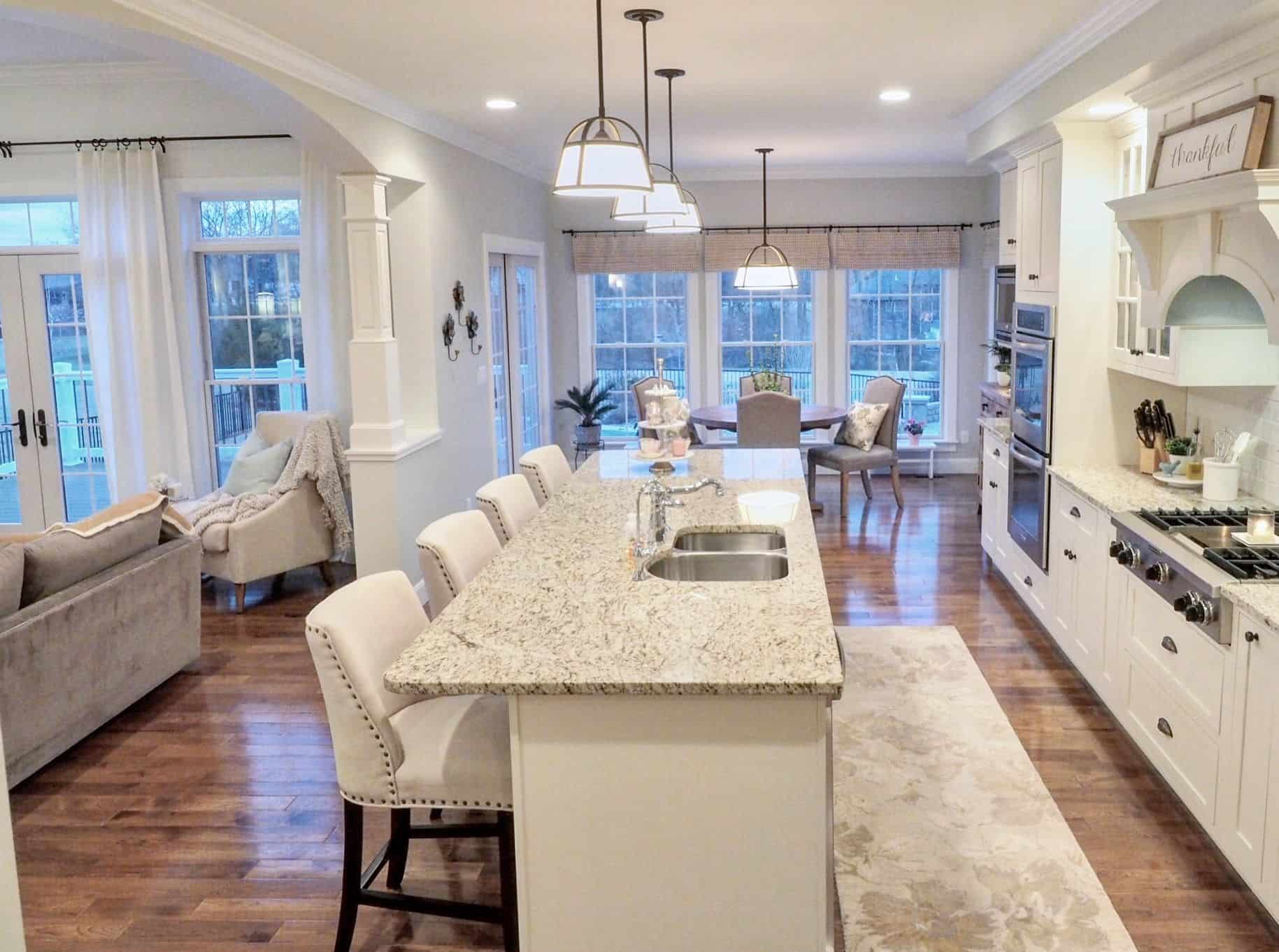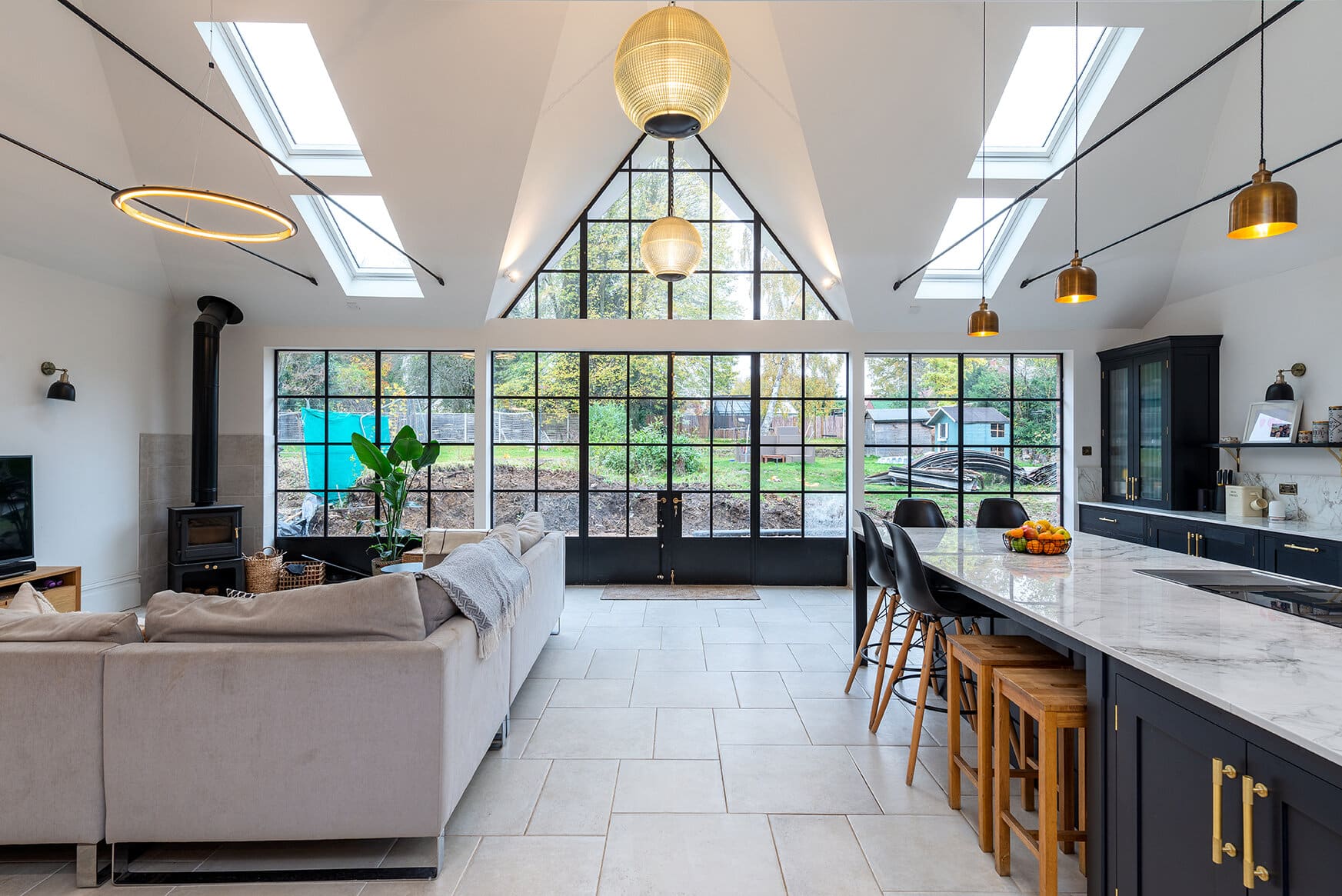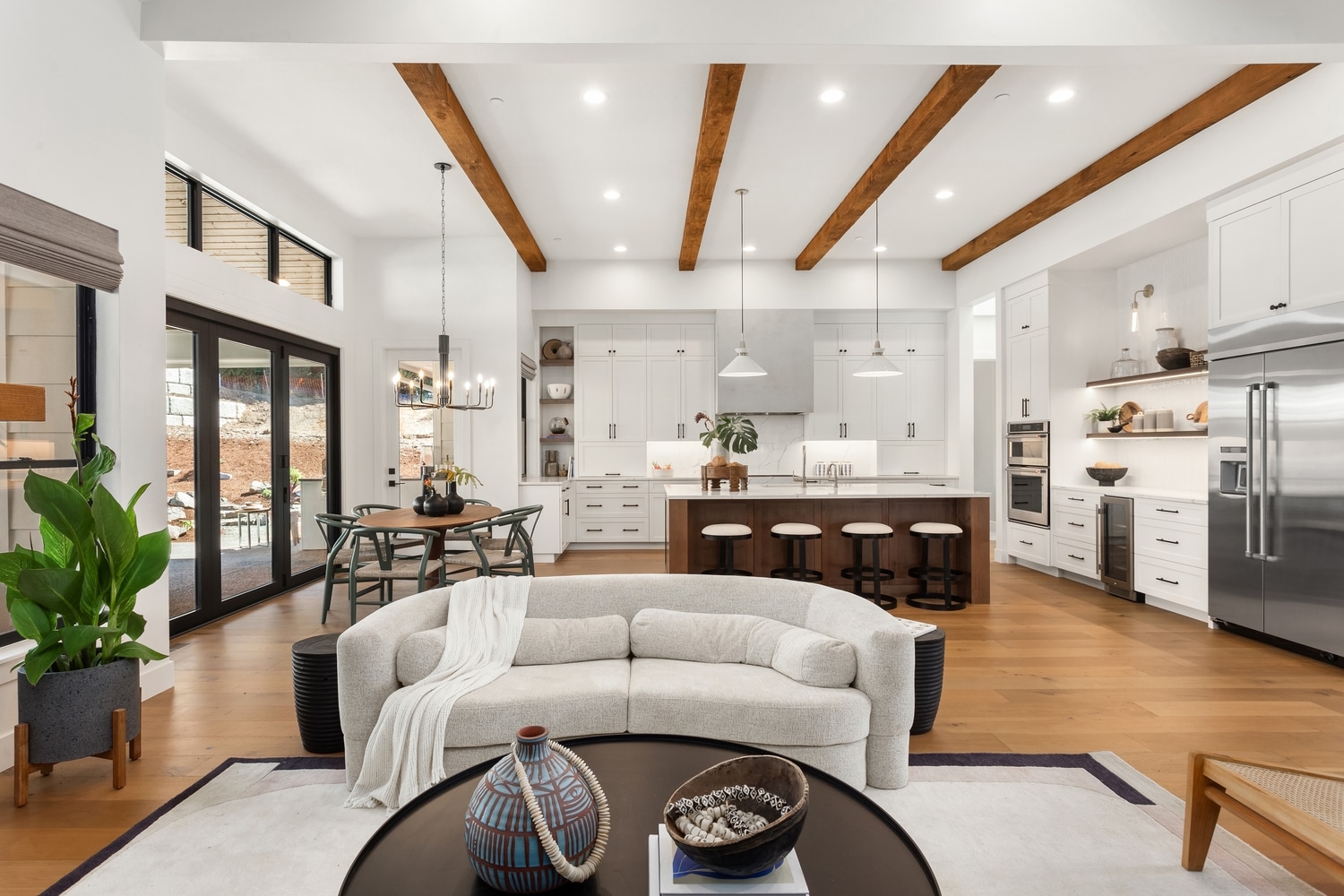Open Plan Bliss: Kitchen & Living Room Layout Ideas
Open Plan Bliss: Kitchen & Living Room Layout Ideas
The open plan layout has become a modern design staple, seamlessly merging the kitchen and living room into a cohesive and inviting space. This trend offers a multitude of benefits, fostering an atmosphere of connection, light, and spaciousness. However, designing an open plan kitchen and living room requires careful consideration to optimize functionality and aesthetic appeal.
This comprehensive guide explores the nuances of open plan layouts, offering expert advice and inspiring ideas to help you create a truly blissful living environment.
The Allure of Open Plan Living
The open plan concept has captivated homeowners for its inherent advantages:
-
Enhanced Flow and Connection: The absence of walls creates a sense of spaciousness and facilitates natural movement between the kitchen and living room. This promotes a feeling of openness and connection, ideal for social gatherings and family interaction.
-
Improved Natural Light: Open plan layouts maximize natural light penetration, creating a brighter and more inviting atmosphere. This is particularly beneficial in smaller spaces where light can be limited.
-
Visual Expansion: By eliminating physical barriers, open plans visually enlarge the area, making it appear more expansive and inviting.
-
Multi-Functional Space: The combined space provides versatility, allowing for various activities like cooking, dining, entertaining, and relaxing.
Planning Your Open Plan Kitchen and Living Room
While open plans offer numerous benefits, meticulous planning is essential to ensure functionality and aesthetic harmony.
1. Defining the Layout
The initial step involves determining the ideal arrangement of furniture and appliances within the open space. Consider the following:
-
Traffic Flow: Optimize the movement pattern to prevent congestion and ensure easy access to key areas.
-
Furniture Placement: Strategically position furniture to maximize space and create distinct zones within the open plan.
-
Appliance Placement: Consider the placement of appliances like ovens, refrigerators, and dishwashers to optimize workflow and minimize noise.
2. Zoning the Space
While the open plan encourages a unified space, establishing distinct zones is crucial for functionality and visual appeal.
-
Kitchen Zone: Designate a clearly defined area for cooking and food preparation, ensuring sufficient counter space, appliances, and storage.
-
Dining Zone: Create a dedicated dining area with a table and chairs, allowing for formal or casual meals.
-
Living Zone: Establish a comfortable living area with seating arrangements, a focal point like a fireplace or TV, and ample space for relaxation and entertainment.
3. Separating Zones Without Walls
To create visual distinction without physical walls, consider these techniques:
-
Furniture Arrangement: Position furniture strategically to visually delineate zones, for instance, using a sofa to separate the living area from the dining space.
-
Area Rugs: Define zones with distinct area rugs, each with a different pattern, color, or texture.
-
Lighting: Utilize different lighting techniques, such as pendant lights over the dining table, recessed lighting in the kitchen, and floor lamps in the living area.
-
Ceiling Height: Employ different ceiling heights to create visual differentiation between zones.
-
Materials and Textures: Utilize contrasting materials and textures, like wood flooring in the kitchen and carpet in the living room, to separate zones.
4. Open Plan Kitchen Design Considerations
The kitchen in an open plan layout requires careful design choices to ensure seamless integration with the living space:
-
Island or Peninsula: An island or peninsula provides additional counter space, storage, and seating, while visually separating the kitchen from the living area.
-
Backsplash and Countertops: Select materials and colors that complement the living room's aesthetic, ensuring cohesion and visual appeal.
-
Storage Solutions: Optimize storage solutions to minimize clutter and maintain a tidy appearance, maximizing the visual impact of the open plan.
-
Appliance Choice: Opt for appliances that blend seamlessly with the kitchen design and minimize noise levels to ensure a harmonious environment.
5. Open Plan Living Room Design Considerations
The living room in an open plan layout demands careful planning to create a cozy and inviting atmosphere:
-
Focal Point: Establish a strong focal point in the living room to draw attention and anchor the space. This could be a fireplace, a large artwork, or a statement piece of furniture.
-
Furniture Selection: Choose comfortable and stylish furniture that complements the kitchen's design and complements the overall aesthetic.
-
Color Palette: Use a cohesive color palette for the living room and kitchen, incorporating complementary shades and textures for a unified look.
-
Window Treatments: Employ appropriate window treatments to control light and privacy, while enhancing the living room's aesthetic.
6. Open Plan Kitchen and Living Room Color Schemes
Choosing the right color palette is crucial for creating a cohesive and visually appealing open plan space:
-
Neutral Base: Opt for neutral colors like white, gray, beige, or cream as a base for the walls and furniture, providing a blank canvas for accents and pops of color.
-
Accents and Pops of Color: Introduce accent colors through throw pillows, artwork, rugs, or furniture to add personality and visual interest.
-
Complementary Colors: Use complementary color schemes, such as blue and orange, green and red, or purple and yellow, for a visually pleasing and balanced effect.
-
Monochromatic Palette: Create a sophisticated look with a monochromatic palette, varying shades of the same color for a cohesive and elegant effect.
7. Open Plan Kitchen and Living Room Lighting
Strategic lighting plays a crucial role in enhancing the open plan space:
-
Natural Light: Maximize natural light penetration with large windows and skylights, creating a bright and airy atmosphere.
-
Layered Lighting: Employ a combination of ambient, task, and accent lighting to create a balanced and inviting atmosphere.
-
Ambient Lighting: Use overhead lighting, such as recessed lights or chandeliers, to provide general illumination.

-
Task Lighting: Install under-cabinet lighting in the kitchen and desk lamps in the living area to provide focused light for specific tasks.
-
Accent Lighting: Highlight focal points with accent lighting, such as wall sconces, track lighting, or spotlights, to create visual interest.
8. Open Plan Kitchen and Living Room Flooring

The flooring choice significantly impacts the open plan space's visual appeal and functionality:
-
Consistent Flooring: Utilize consistent flooring throughout the open space for a unified look, creating a seamless flow between the kitchen and living room.
-
Durable Materials: Select durable materials that can withstand heavy traffic and spills, such as tile, hardwood, or laminate flooring.

-
Comfort: Choose flooring materials that offer comfort and warmth underfoot, especially in the living room area where you'll be spending time relaxing.
-
Style: Consider the overall aesthetic of the open plan space when selecting flooring, choosing colors, patterns, and textures that complement the design.
9. Open Plan Kitchen and Living Room Storage Solutions

Storage solutions are paramount to maintaining a tidy and organized open plan space:
-
Built-in Storage: Utilize built-in cabinets, shelves, and drawers in the kitchen and living room to maximize storage potential.
-
Open Shelving: Incorporate open shelving in the kitchen and living room for displaying decorative items and creating a visually appealing display.

-
Multi-Functional Furniture: Invest in multi-functional furniture, such as ottomans with storage compartments or coffee tables with built-in shelves, to maximize storage space.
-
Wall-Mounted Storage: Utilize wall-mounted storage solutions, such as shelves, hooks, and organizers, to maximize vertical space and minimize clutter.
10. Open Plan Kitchen and Living Room Furniture Selection

Selecting the right furniture is crucial for creating a comfortable and stylish open plan space:
-
Comfortable Seating: Prioritize comfortable seating in the living room, opting for sofas, armchairs, or beanbags that encourage relaxation.
-
Multi-Functional Furniture: Consider multi-functional furniture like a sofa bed or a dining table that can double as a desk, maximizing space and versatility.

-
Focal Point Furniture: Choose a statement piece of furniture, such as a large area rug, a unique coffee table, or a striking artwork, to create a focal point and anchor the living room.
-
Open Plan Kitchen and Living Room Decor
Decorating an open plan space requires a balanced approach to create a visually appealing and harmonious atmosphere:

-
Cohesive Style: Choose a cohesive style for both the kitchen and living room, selecting décor elements that complement the overall aesthetic.
-
Color Palette: Maintain a consistent color palette throughout the open plan, incorporating accents and pops of color for visual interest.
-
Textiles and Patterns: Use textiles and patterns to add texture and visual interest to the space, for instance, patterned cushions, throws, or rugs.

-
Artwork and Mirrors: Hang artwork and mirrors strategically to create a sense of depth and visual interest, reflecting light and enhancing the space's ambiance.
-
Plants and Greenery: Incorporate plants and greenery to bring life and freshness to the open plan space, creating a welcoming and vibrant atmosphere.
Conclusion

Designing an open plan kitchen and living room layout requires a thoughtful approach to maximize functionality and aesthetic appeal. By considering factors like zoning, traffic flow, furniture placement, and color schemes, you can create a truly blissful living environment that promotes connection, light, and spaciousness. Remember, embrace the inherent advantages of the open plan layout while paying attention to the design details that will make your space truly unique and inviting.
Open Plan Bliss: Kitchen & Living Room Harmony
The open plan concept has taken the world of interior design by storm. Gone are the days of strict separation between living areas and kitchens; instead, we embrace the fluidity and connectivity of open-concept living. This approach fosters a sense of spaciousness, encourages interaction, and allows for a seamless flow of life within the heart of the home. While the open plan kitchen and living room arrangement boasts numerous benefits, there are also some unique considerations and design challenges to navigate.
This article delves into the world of open plan living, exploring its advantages and drawbacks, providing design tips, and offering solutions to make this popular layout truly work for you.
The Allure of Open Plan Living
The appeal of the open plan layout is undeniable. It offers several benefits that cater to modern lifestyles and design preferences:
1. Enhanced Spacial Flow and Visual Appeal: Open plan layouts create an illusion of larger space, making smaller homes feel more expansive and inviting. The absence of walls allows for a natural flow of light and movement, creating a bright and airy atmosphere.
2. Fostering Connection and Interaction: This design encourages social interaction, allowing for seamless conversation and shared experiences. Whether you're entertaining guests or simply enjoying a casual meal, the open plan design promotes a sense of togetherness.
3. Versatility and Flexibility: Open plan layouts offer incredible flexibility in terms of furniture placement and design customization. You can effortlessly adapt the space to suit different occasions and needs, from cozy movie nights to lively gatherings.
4. Maximizing Natural Light: By removing walls, you allow natural light to penetrate the entire living space, enhancing the overall ambiance and creating a cheerful and inviting atmosphere.
5. Modern Aesthetic: The open plan design is inherently contemporary, creating a clean and streamlined look that resonates with modern living.
Navigating the Challenges of Open Plan Design
While open plan living offers numerous benefits, it's essential to acknowledge potential challenges and find solutions to overcome them:
1. Noise and Visual Clutter: The absence of walls can amplify noise levels, making it difficult to create distinct zones for different activities. Visual clutter can also be a problem, especially in small spaces, where it can easily feel overwhelming.
2. Limited Privacy: The open plan design can sometimes compromise privacy, making it challenging to create intimate spaces for quiet activities or personal moments.

3. Kitchen Odors and Grease: The open plan design allows kitchen odors and grease to easily spread throughout the living area, which can be a concern for some homeowners.
4. Design Considerations: The open plan concept requires careful planning and execution to achieve a balanced and functional layout. Achieving harmony between the kitchen and living room requires thoughtful design choices.
Designing for Open Plan Bliss: Practical Tips and Ideas

1. Defining Zones with Subtlety: While the open plan design embraces openness, it doesn't necessarily have to be devoid of any boundaries. You can use various elements to subtly define zones within the space, creating visual separation without resorting to walls.
-
Furniture Arrangement: Strategic furniture placement is crucial for defining zones. For example, using a sofa or large rug to separate the living area from the kitchen.
-
Floor and Wall Treatments: Different flooring materials or wall finishes can create a subtle visual distinction between the kitchen and living room areas.

- Lighting: Utilize lighting to create different moods and zones within the space. You can install spotlights or pendant lights over specific areas to highlight focal points or create a cozy reading nook.
2. Embracing Visual Harmony: Achieving harmony between the kitchen and living room is essential for a successful open plan layout. Consider the following:
- Color Palette: Use a cohesive color palette that flows seamlessly throughout the entire space. Choose complementary or analogous colors that create a sense of visual unity.

-
Material Choices: Choose similar materials for countertops, cabinets, and furniture to create a cohesive and elegant look. For example, use natural wood elements in both the kitchen and living room.
-
Style Consistency: Maintaining a consistent style throughout the space is crucial. Whether you favor minimalist, contemporary, or traditional aesthetics, apply it consistently to both areas.
3. Addressing Noise and Clutter: Dealing with noise and clutter is crucial for a comfortable open plan living experience.

-
Soundproofing Solutions: Consider installing sound-absorbing materials like rugs, curtains, or acoustic panels to dampen noise levels.
-
Storage Solutions: Maximizing storage solutions in both the kitchen and living room is vital for minimizing clutter. Invest in storage cabinets, shelves, and hidden compartments to keep things organized.
-
Open Shelving: Open shelving offers a great way to display decorative items while keeping the kitchen organized and visually appealing. Choose decorative storage solutions like baskets or boxes to add a touch of style and conceal clutter.

4. Creating Intimacy and Privacy: While open plan layouts promote openness, creating pockets of intimacy is also important.
-
Curtains and Screens: Use curtains or room dividers to create a temporary sense of privacy when needed. For example, a simple curtain can transform a small section of the living room into a reading nook.
-
Furniture Placement: Strategic furniture placement can create visual barriers, dividing the space without creating physical walls. For example, a tall bookcase can act as a room divider, separating the kitchen from the living area.

5. Dealing with Kitchen Odors and Grease: The open plan design requires a thoughtful approach to prevent kitchen odors and grease from spreading throughout the living room.
-
Powerful Ventilation System: Invest in a powerful ventilation system, like a range hood with excellent suction power, to effectively remove cooking odors and grease.
-
Strategic Placement of Cooking Appliances: Consider placing cooking appliances strategically to minimize the spread of odors. For example, position the stove away from the living area to minimize the impact of cooking smells.

Open Plan Kitchen & Living Room: Real-Life Inspiration
-
Industrial Chic: A combination of exposed brick, metal accents, and reclaimed wood creates a raw and edgy aesthetic. The use of open shelving and bar stools adds a touch of urban charm.
-
Minimalist Modern: Clean lines, neutral colors, and minimal ornamentation define this style. The use of light wood tones, marble countertops, and sleek appliances creates a sophisticated and modern look.

-
Cozy Country: Warm wood tones, natural materials like linen and wool, and soft lighting create a welcoming and inviting ambiance. The use of antique furniture and vintage accessories adds a touch of rustic charm.
-
Mediterranean Style: Vibrant colors, natural textures, and ornate details evoke a sense of warmth and hospitality. The use of terracotta tiles, woven rugs, and patterned cushions creates a vibrant and inviting atmosphere.
Conclusion: Embracing the Open Plan Dream

Open plan kitchens and living rooms are a fantastic way to create a modern, connected, and stylish home. While there are some challenges to consider, with careful planning and creative design solutions, you can create an open plan layout that is functional, beautiful, and truly reflects your unique style. From defining zones with subtle elegance to maximizing storage and privacy, the possibilities for open plan living are endless. By embracing the principles of openness, flow, and harmony, you can transform your home into a sanctuary of style and comfort. .

